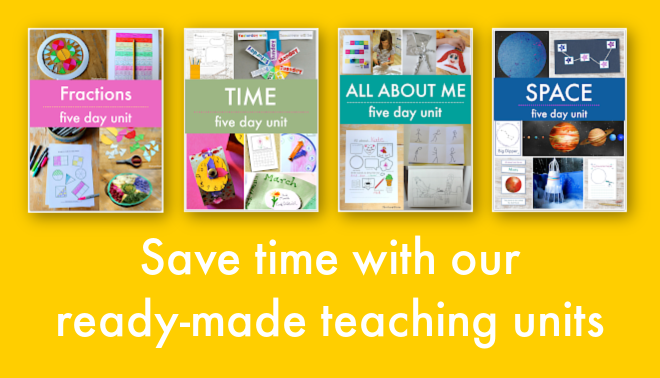Join our Easy Warm and Cool Colors Art Project for Beginners and we’ll draw a disco ball step by step. You will learn about warm and cool color theory, see how artists use this color theory in their work and enjoy creating your own warm and cool color study.
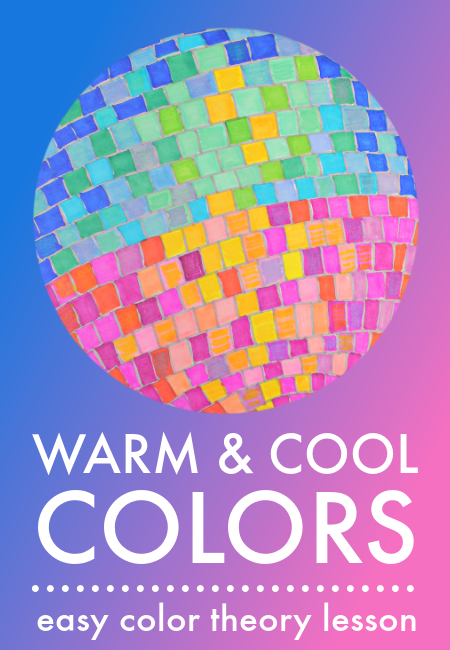
Easy warm and cool colors art project for beginners: draw a disco ball step by step
In this lesson you can:
:: learn about the color wheel and the color theory of warm and cool colors
:: explore the associations colors have with emotions and ideas and think about how this is different in different cultures and countries
:: see examples of famous art using warm and cool colors
:: create your own art using warm and cool colors
:: have fun and enjoy drawing a disco ball step by step
This colour theory lesson is part of our children’s art lessons and craft activities.
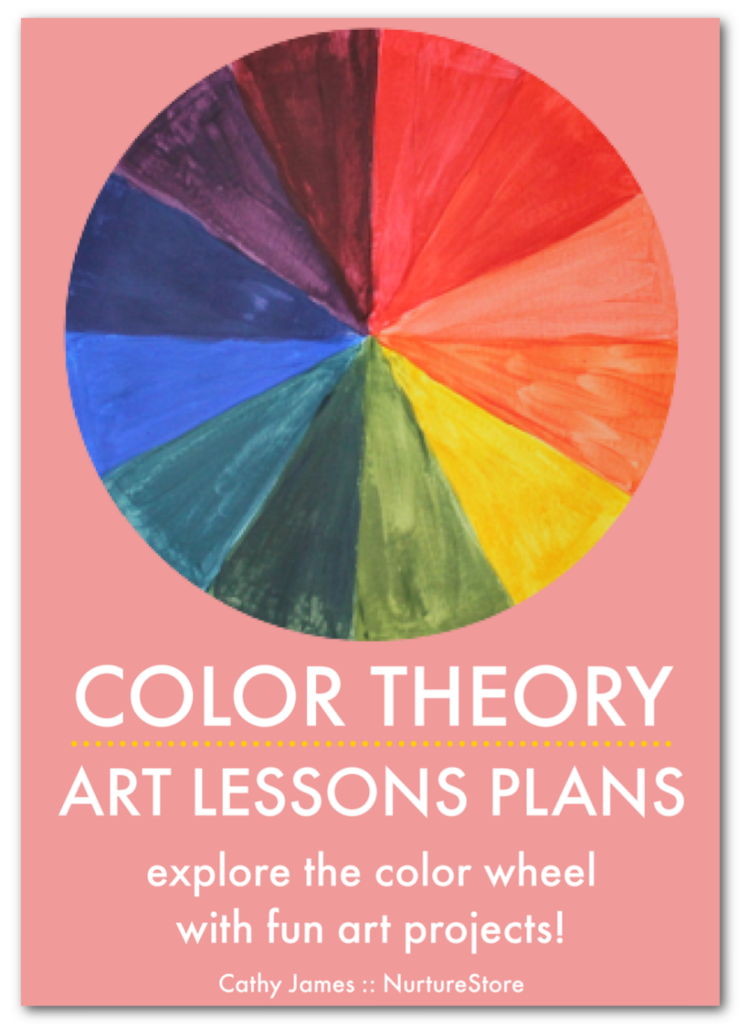
Get all our Color Theory art lesson plans
Use our ready-made Color Theory Art Lesson Plans to explore the color wheel with creative art projects. Our Color Theory curriculum gives you all the resources you need to learn about the color wheel and color theory and enjoy easy and fun art projects for every lesson.
The kit includes art history guides, famous artist profiles, and wider cross-curricular lessons in science, math, language arts and world culture, plus bonus printables and posters to make your teaching even easier.
See more details of our Color Theory curriculum and get your copy here.
Watch this art lesson on video
Join NurtureStore’s art classes on YouTube! Watch this video and follow along with our Easy Warm and Cool Colors Art Project for Beginners and we’ll draw a disco ball step by step. You will learn about warm and cool color theory, see how artists use this color theory in their work and enjoy creating your own warm and cool color study.
See all our art videos and subscribe to our channel here.
Easy warm and cool colors art project for beginners step by step
Let’s start by talking a little about colour theory with a look at the colour wheel.
You’ll notice that we have the rainbow of colours shown like spokes around the wheel, with red flowing in to orange, yellow, green, blue, purple and back to red.
There are different ways to group colours together to create different feelings and effects in your art. This lesson focusses on the theory of warm and cool colors.
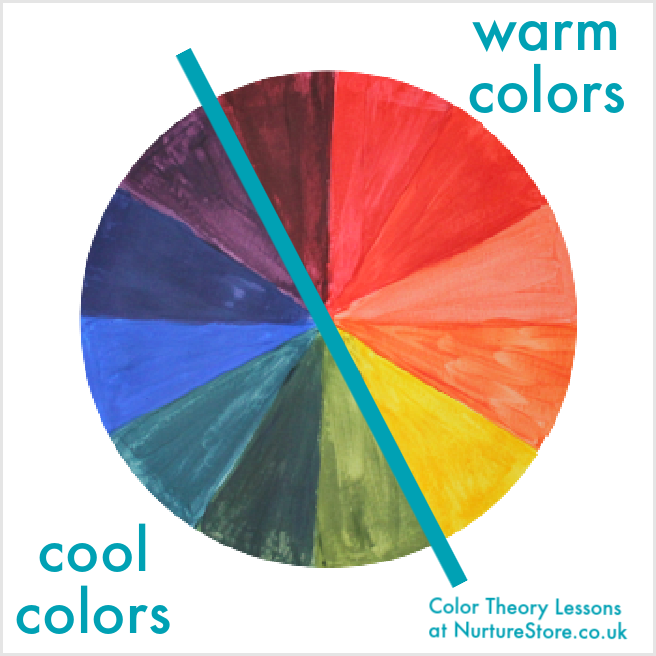
Imagine this colour wheel divided in half with the blues, green and some purples on one side. These are considered the cool colours.
The reds, oranges and yellows are on the other half of the wheel are called warm colors.
Do you have a favourite half? Do you tend to choose clothes from one half more than the other? If you were designing your dream room, would you choose to decorate it in the warm colours of red, orange and yellow, or the cool colours of green and blue.
There are no right or wrong answers, it’s entirely your personal preference, but artists might deliberately choose to use colours from the warm or cool side of the spectrum if they want to create a particular atmosphere in their art.
Warm colours are said to bring energy, and cool colours are said to bring a feeling of calm.
Warm colors are often associated with happy, joyful emotions. They are linked to sunshine, the day time, and summer and autumn.
Cool colors can be used to express sad, calm, and tranquil emotions. They can be linked to water, night time, and the winter months.
Different cultures associate different meanings to different colours too. In the UK red can be used on signs to indicate danger and is also a colour of love and the colour of Christmas. It’s a colour of luck and happiness in China and is used in decorations for the Chinese Lunar New Year. In India, red symbolises purity and brides traditionally wear red wedding dresses.
It’s not just red that has different meanings in different cultures: blue, brown, yellow, orange, black and white can all have very different associates depending on the country and culture it’s used in.
So how do you think of warm and cool colors? What words and associations do you have for each group? If you had to live in one half of the colour wheel, warm or cool, which one would you pick?
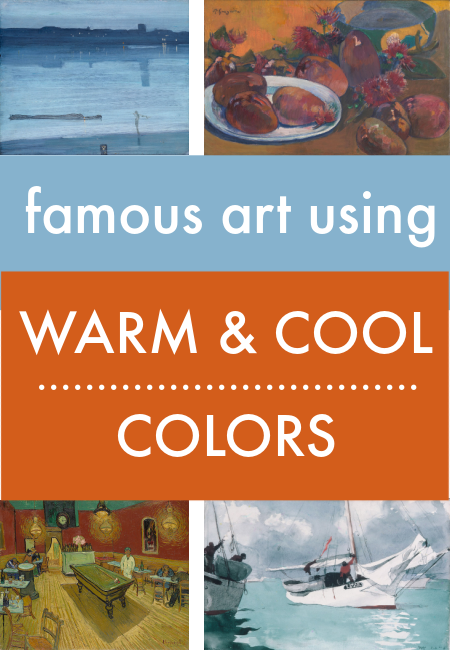
Famous art examples of warm and cool colours
So now we’ve thought about what warm and cool colours mean to us personally, let’s take a look at some famous paintings where the artists have chosen to use with warm or cool colours.
Watch video above to see examples of famous art featuring warm and cool colors. As you look at each one answer the question:
:: What can you see?
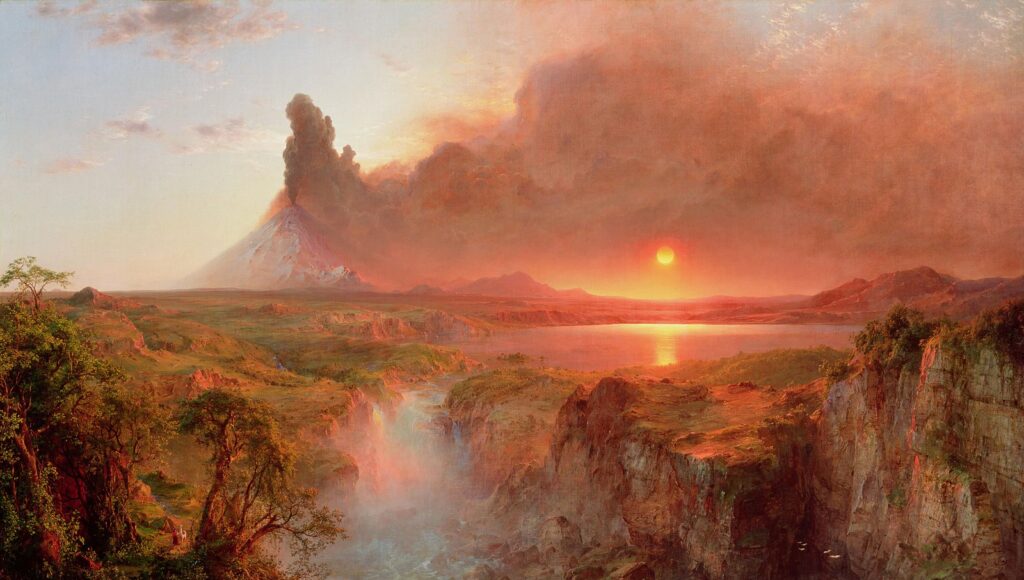
Famous art examples using warm colors
Here are some examples of famous art that use warm colors. You can see all the pictures in the video above.
:: Sunflowers by Vincent van Gogh
:: Still Life with Mangoes by Paul Gaugin
:: The Night Cafe by Vincent van Gogh
:: Cotopaxi by Frederic Church
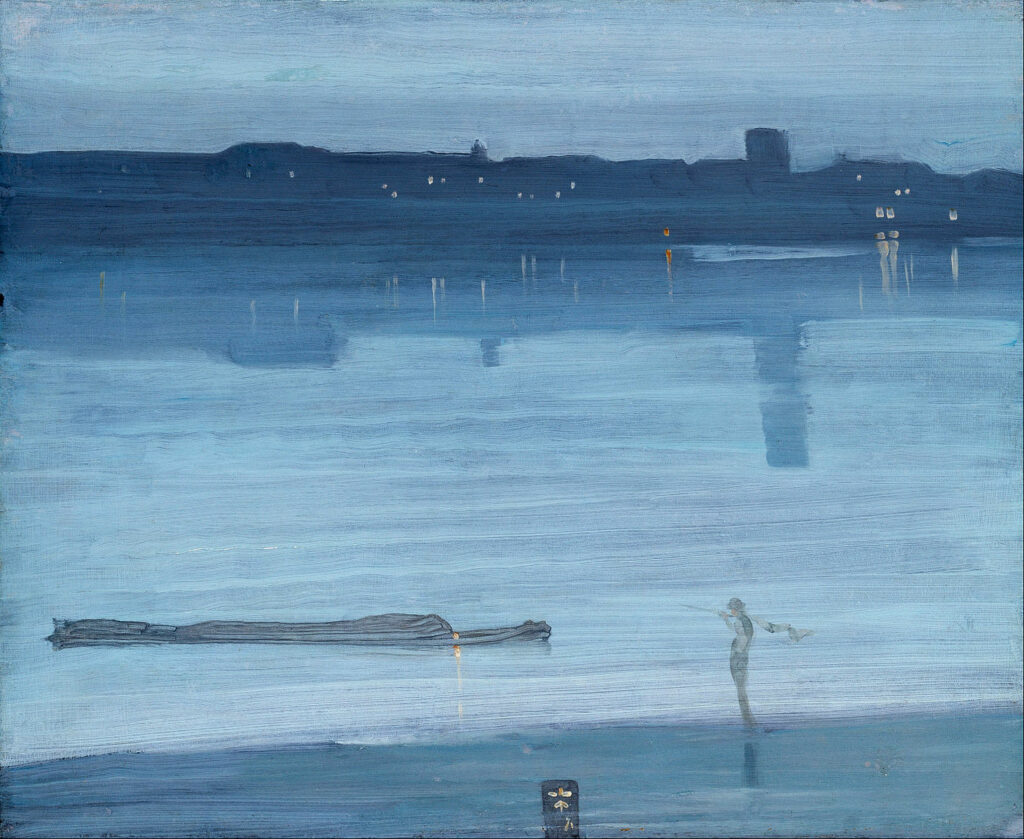
Famous art examples using cool colors
Here are some examples of famous that use cool colors. You can see all the pictures in the video above.
:: The Artist’s Garden at Giverny by Claude Monet
:: The Great Wave off Kanagawa by Katsushika Hokusai
:: Fishing Boats, Key West by Winslow Homer
:: Nocturne: Blue and Silver – Chelsea by James McNeil Whistler
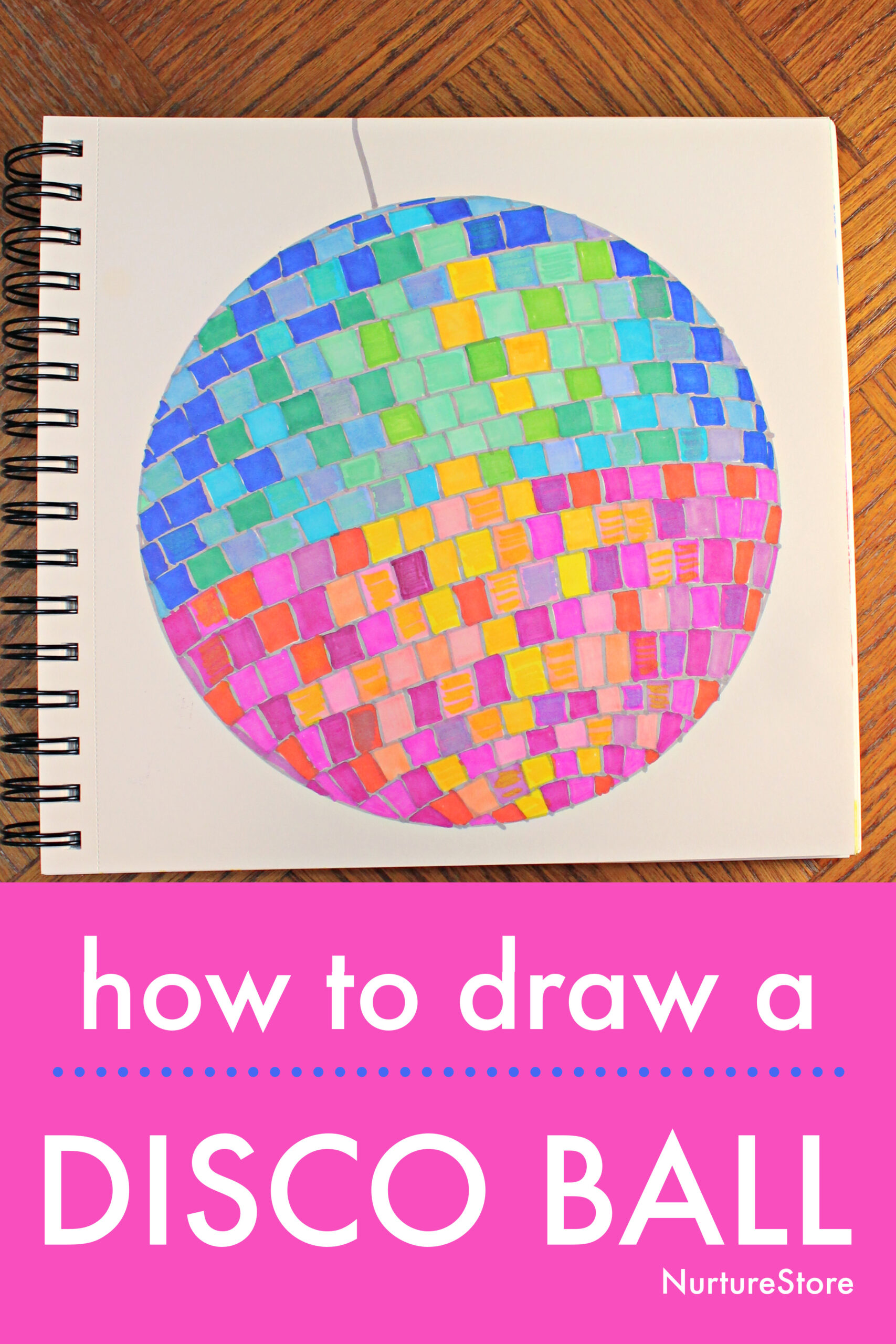
Materials needed for this warm and cool colors art project
Now let’s create our own art to explore these ideas of warm and cool colours and enjoy drawing a disco ball! You can see full step-by-step instructions of this project by watching the video above.
For this warm and cool colors art project you will need:
:: piece of white paper or card
:: your choice of colouring materials in both warm and cool colours: red, yellow, orange, purple, blue, green paints or marker pens or colouring pencils
:: grey marker pen
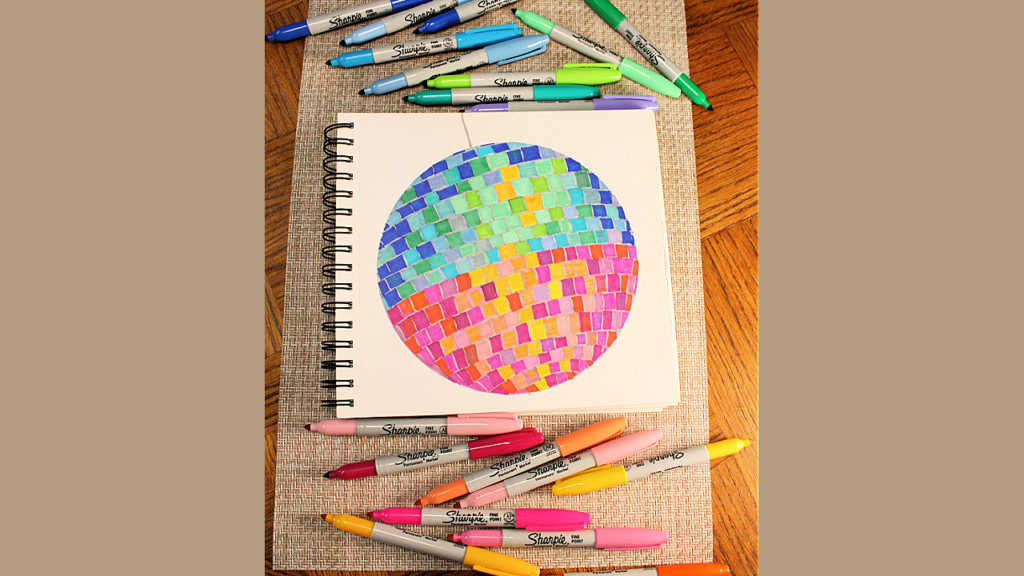
Select your warm and cool colors for your art project
Begin by dividing your paint, pens, pencils or oil pastels into two groups:
:: warm colours or red, orange, yellow and warm purples
:: cool colors of blue, green and cool purples
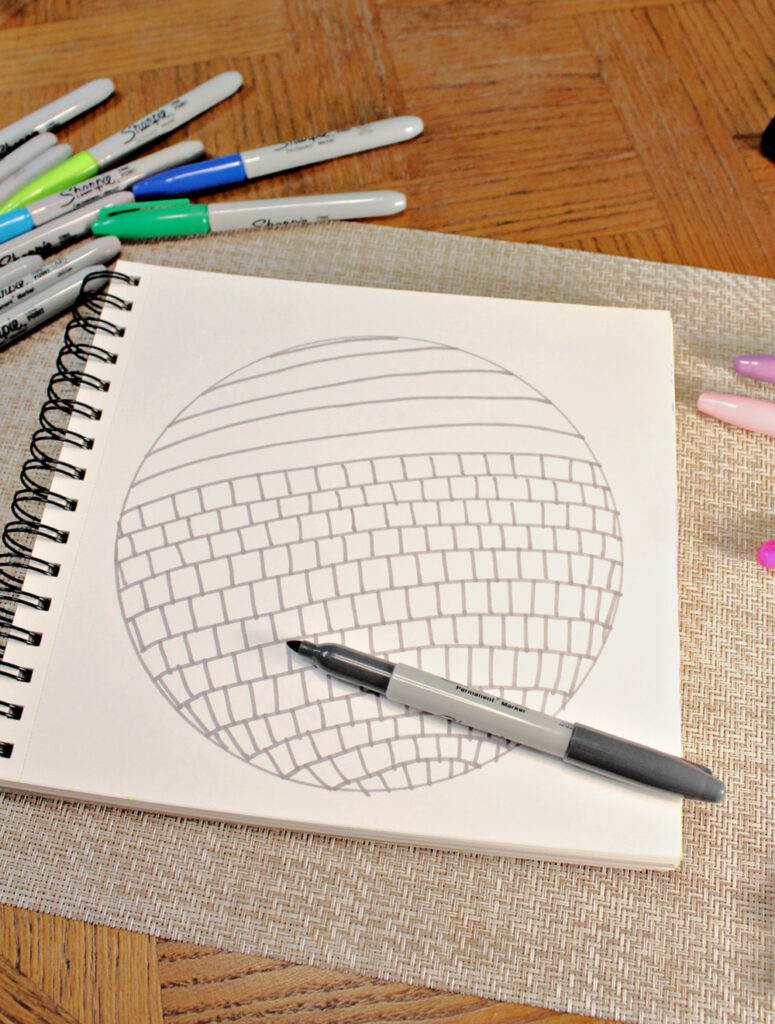
Draw a disco ball outline
Use a grey marker pen draw a disco ball outline on your page.
Begin with a circle: you can draw around a plate or bowl or draw free hand.
Draw lines across the circle to create rows, curving them slightly for a 3D effect.
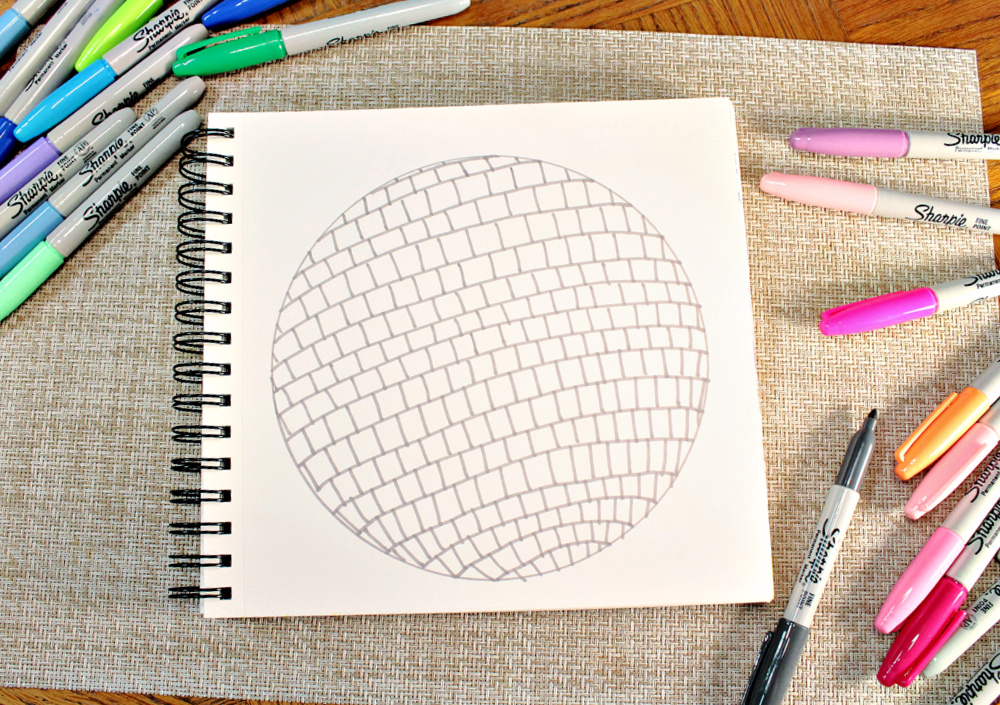
Draw vertical lines along each row to create the tiles on the disco ball. Don’t draw the lines directly under each other but rather stagger them, to create a tiled effect, like the way bricks are arranged in a wall.
Watch the video above to see all this in action!
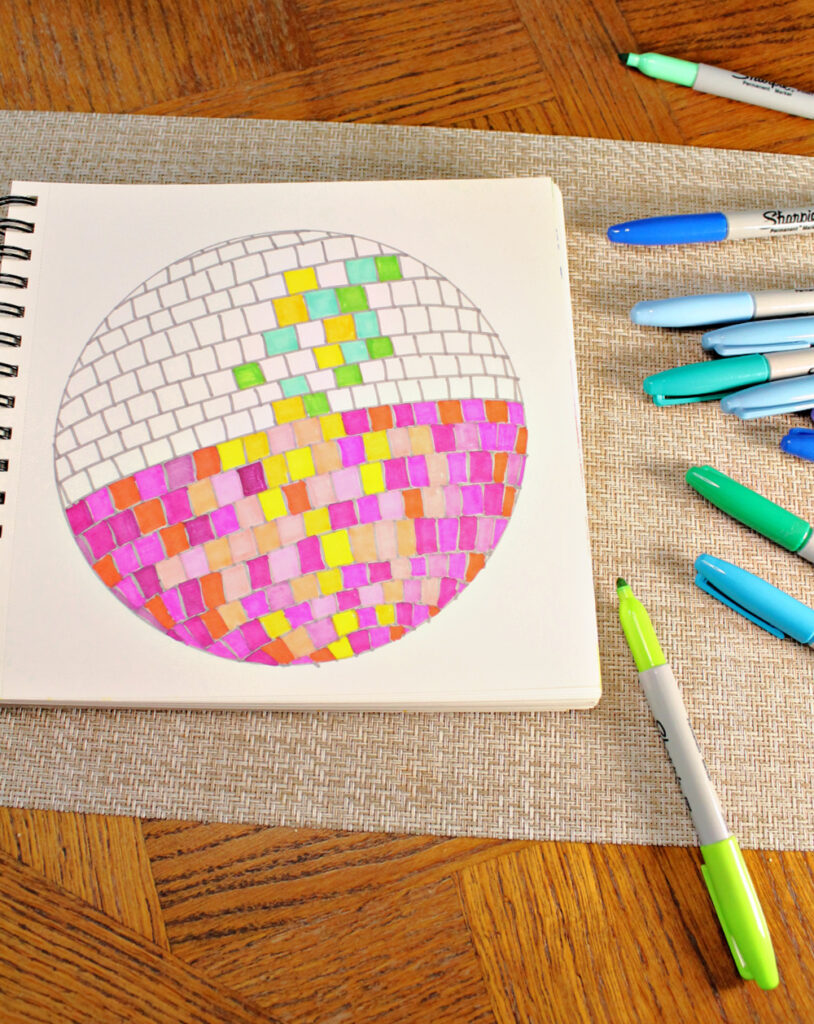
Color in the disco ball using warm and cool colors
Use your warm and cool colours to fill in the tiles on your disco ball.
Colour one area of the disco ball in warm colours and a different area on the disco ball in cool colours. You can decide which area to make warm and which area to make cool. You might like to split the disco ball in half across the middle and put one set of colours on the top half and the different set of colurs on the bottom half. You might instead split the disco ball on a diagonal line, with the top right in one set of colors and the bottom left in the other set of colors. Or you might decide to place a focal point in one set of colors somewhere on your disco ball and have the other set of colours all around the edge. Whatever you choose, keep the warm and cool colors separate in this color study exercise.
Watch the video above to see how the disco balls fills up with color!
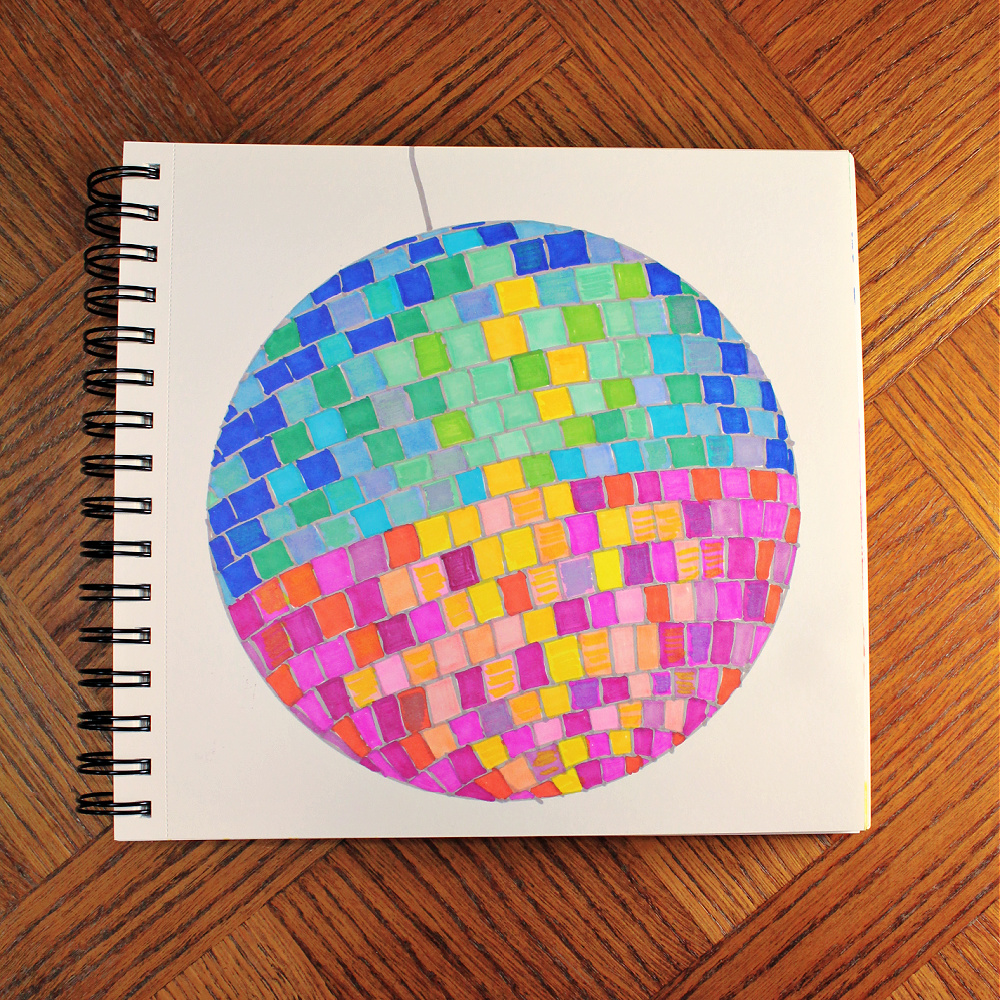
Continue coloring until the whole disco ball is filled with warm and cool colors.
Add further pen lines or embellishments such as glitter or glitter glue as desired. (See video for more details.)
Enjoy the relaxation and mindfulness of taking time to color in your disco ball.

Get all our Color Theory art lesson plans
Use our ready-made Color Theory Art Lesson Plans to explore the color wheel with creative art projects. Our Color Theory curriculum gives you all the resources you need to learn about the color wheel and color theory and enjoy easy and fun art projects for every lesson.
The kit includes art history guides, famous artist profiles, and wider cross-curricular lessons in science, math, language arts and world culture, plus bonus printables and posters to make your teaching even easier.
See more details of our Color Theory curriculum and get your copy here.



